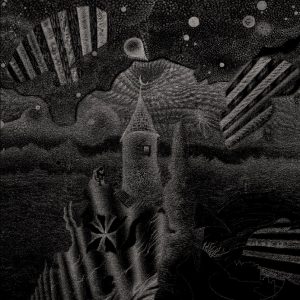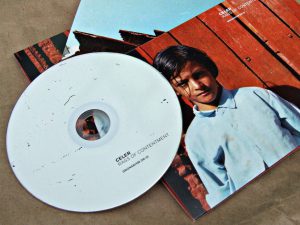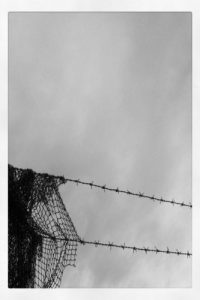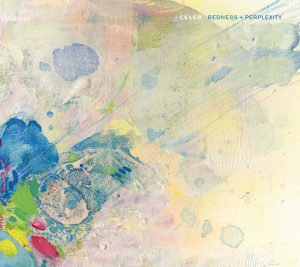A feel-good sense of liberty rises in the air of Lightness & Irresponsibility, exhaling a state of tranquility that is just as irresponsible and free of care as a delightful breeze playing in abandon. As this irresponsibility, this innocence in music and in play, stirs upon our face, so too does Celer stir creamy, sublime textures of ambience, releasing them into the air where they may fall with grace. Lightness & Irresponsibility is the iridescent brilliance of a gorgeously lit afternoon, one where the hours may unfurl in their own delayed irresponsibility, sleepily, to the relaxed passing of the day. It’s an afternoon that may only feel like seconds, until a change in the light is observed.
Just as these days remain long after they have departed, the sedate feelings experienced when listening to Celer’s music may also remain, if they would like to. They needn’t ask. The shy nature of the music creates an introverted circle of contentment and joy, surrounded by drones so sublime they become almost heart-wrenching, glinting soft, prismatic rainbows that illuminate whoever may listen.
Celer’s ambience remains in a constant motion despite the minimal nature of the two pieces gracing the album, and Will Long’s prolific rate and output of music doesn’t seem to limit him in scope or result in a decreased level of quality, as he is seemingly capable of releasing freshly-scented ambient flavours with every new musical endeavour and without any sign of risk. Lightness & Irresponsibilityis possibly one of Celer’s quietest releases. It is also a stand-out in terms of utterly gorgeous texture, only just rising above a hush on the breeze and straying close to the ground without ever displaying a desire to go higher; it’s fine where it is. Will Long’s ambience is now completely refined, perhaps more clearly and deliberately than any other release in his past, and he continues to display a complete understanding of the drone and its artistry. It is clear that Long is an artist with not only the experience and the maturity to effectively calm, nurture and slowly soak his ambient textures; he also has the feel of ambient music down, in that he never demands attention. There is a level of care in the music that reveals a love for the style, and of ambient textural development. The music remains introverted and shy, and yet still captures the heart.
Lightness & Irresponsibility may feature an increase of quiet reservation due to its Japanese setting. Recorded in Tokyo, the drones which hover have an air of Japanese civility, politely circling around a single pitch with a respect for their development and a courtesy towards their environment of Japanese grace. The drones remain understated, while gently rising currents of lower drones add a depth, resembling a concealed intensity underneath still waters. On the surface, the pitch never seems to stray, and this is the ultimate beauty of the music.
Lightness & Irresponsibility is both heart-crushing and uplifting, and a beautiful paradox of freedom and tonal confinement. Lighthearted, Long’s ambience is freed from any underlying, deeper drones which may enforce the restrictions of gravity. Long, too, is playful over the running length of forty-two minutes, but he maintains a precise devotion to the drone throughout the two pieces. Lightness & Irresponsibility may also be Long’s most subdued musical work. Just as thin as the breeze, the music is light enough to be knocked permanently off course at the slightest touch. Airy drones lift free in a playful dance, just skimming the surface. Like a thin mist, they hover in a pre-summer haze, settling in a period where spring is not quite done and summer is not quite ready.
Celer’s drones lay under a creamy sky, where white clouds drift as slowly as the music on a hazy afternoon. The two pieces share similar tones, but are entirely different. What makes this more of an ambient skill is that Long maintains an interest throughout the music, even though the changes which occur require splashes of patience; something which a seasoned ambient listener will no doubt have in abundance.
Celer’s daze of irresponsibility opens “An Unforced Cheerfulness”, as delicate and as beautiful as a falling blossom, where colours of cherry and vanilla fall in unison until they are cushioned by descent’s end upon reaching the ground. Mysterious traces enter inside the music, leaving perfect circles of interest for the listener and keeping everything fresh. Organ-deep, the drones may change to an unexpected, darker tone, slightly lifting the veil of innocents’ illusion. Finally, after their fall, the drones revolve around their tonal center until the desired resolution is reached. It acts as a reminder that a slight change is all that is needed to turn the atmosphere cloudier and cooler. ”Involuntary Impromptu” depicts the playful nature of the drones, a loving chase played out over silent thoughts. The drones feel thin, yet they are fragile enough to exist and appreciate, and the whole piece shines like the sun glinting off an airplane’s wing of dull metal.
Anything that has slipped away was something that was previously clasped, even if it was just for a second. Music by its very nature is playful; she wants to run care-free in the late afternoon light, around the seasonal haze which separates late spring and early summer. This light is a beautiful one, and Celer’s music is at the heart of it; a sublime, blossoming light that remains forever attractive.
Link






